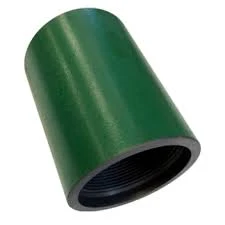perforated pup joints
Understanding Perforated Pup Joints Applications and Benefits
In the world of drilling and completion in the oil and gas industry, every component plays a crucial role in ensuring efficient operations and maximizing production. Among these components, perforated pup joints often go unnoticed, yet they serve a vital function in enhancing fluid flow and managing pressures throughout the drilling process.
What are Perforated Pup Joints?
Perforated pup joints are short lengths of pipe featuring holes or perforations along their cylindrical surfaces. These joints are typically utilized in conjunction with other pipe sections to facilitate various operations, particularly in wellbore completion and production. The primary purpose of these perforations is to allow fluid—whether it be oil, gas, or water—to flow in and out of the pup joint without any obstruction. This design can greatly enhance the efficiency of fluid transfer in production systems.
Key Applications
The application of perforated pup joints spans a variety of drilling operations
1. Fluid Diversion By installing perforated pup joints at strategic locations, operators can effectively divert fluid to specific zones of interest within the reservoir. This is particularly useful in multi-zone completions, where it is essential to manage the flow from different geological formations independently.
2. Controlled Production In instances where the well exhibits varying pressures and fluid compositions, perforated pup joints can be employed to optimize the production process. By controlling the flow through these joints, operators can ensure the right balance of fluids is extracted, enhancing the overall efficiency of the well.
3. Monitoring and Sampling The perforated design allows for easier monitoring of reservoir conditions. By inserting sensors or sampling equipment through these joints, operators can continuously assess the properties of the fluid being produced, such as its temperature, pressure, and composition.
Advantages of Perforated Pup Joints
The use of perforated pup joints offers several significant benefits
perforated pup joints

- Enhanced Flow Rates The perforated structure reduces restrictions that would otherwise impede fluid movement, allowing for higher flow rates and better production efficiency.
- Versatility These joints can be manufactured to fit various sizes and specifications, providing flexibility in design that can be tailored to the specific needs of a well.
- Reduced Risk of Blockages Traditional solid pipes can become blocked over time due to the accumulation of debris or scale. By allowing fluid to flow freely, perforated pup joints minimize this risk, thereby reducing maintenance and downtime.
- Improved Well Control The ability to monitor fluid characteristics in real-time through perforated joints enhances the operator’s ability to manage the well effectively, allowing for prompt responses to any changes in production.
Considerations for Use
While perforated pup joints present numerous advantages, there are some considerations to keep in mind
- Material Selection It is crucial to select the right materials for the pup joints, especially in harsh environments where corrosion or temperature fluctuations may be a concern. Common materials include carbon steel, stainless steel, and specialized alloys.
- Perforation Design The size, number, and placement of perforations should be carefully considered based on the specific application and reservoir characteristics. Strategic placement can maximize fluid access while minimizing the risk of sand or other particulates entering the production stream.
- Installation Expertise Proper installation of perforated pup joints is essential to their effective function. Operators must ensure that they are installed in accordance with industry standards and best practices to avoid issues later in the production process.
Conclusion
Perforated pup joints, although often overlooked, are integral components in the realm of oil and gas drilling. Their ability to facilitate fluid flow, enhance efficiency, and provide critical monitoring capabilities makes them invaluable in modern extraction technologies. With careful consideration of their design and installation, the benefits they provide can significantly impact the success of drilling operations, optimizing production and contributing to the overall profitability of oil and gas ventures. Understanding their function and application can empower operators to leverage this essential tool efficiently and effectively in the ever-evolving energy landscape.
-
Tubing Crossover - API Compatible, Custom Sizes, In StockNewsNov.10,2025
-
Tubing Coupling | High-Strength, Leak-Proof Steel CouplingsNewsNov.10,2025
-
Wholesale API Threading Casing Coupling | API 5CT, Fast ShipNewsNov.10,2025
-
Pup Joint Supplier | API Certified, Custom, Quick ShipNewsNov.10,2025
-
Pup Joint Manufacturers | Precision Machined, Fast DeliveryNewsNov.10,2025
-
Tubing Coupling | Precision Steel, Leak-Proof, Fast DeliveryNewsNov.03,2025







